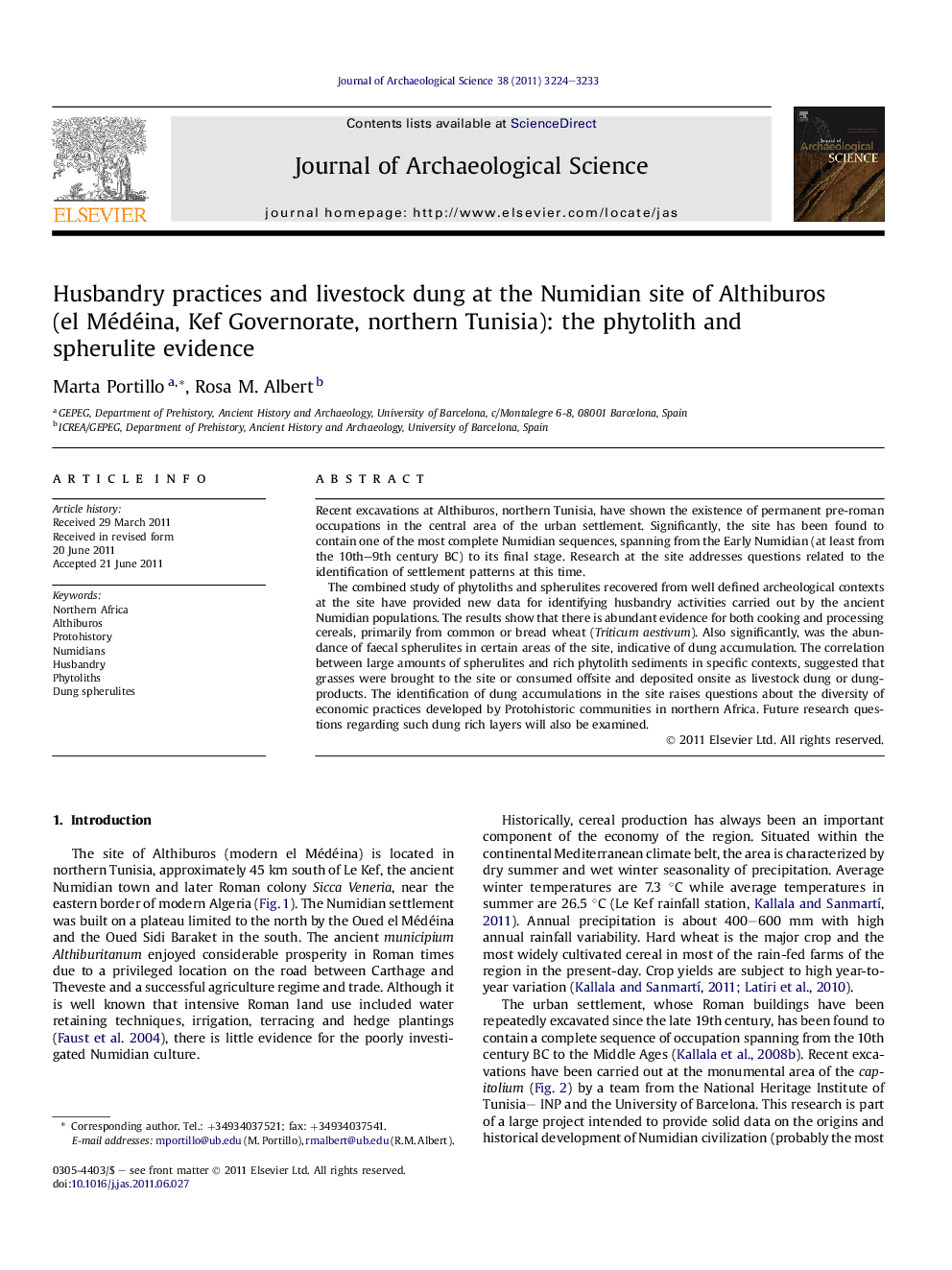| کد مقاله | کد نشریه | سال انتشار | مقاله انگلیسی | نسخه تمام متن |
|---|---|---|---|---|
| 1035999 | 943873 | 2011 | 10 صفحه PDF | دانلود رایگان |

Recent excavations at Althiburos, northern Tunisia, have shown the existence of permanent pre-roman occupations in the central area of the urban settlement. Significantly, the site has been found to contain one of the most complete Numidian sequences, spanning from the Early Numidian (at least from the 10th–9th century BC) to its final stage. Research at the site addresses questions related to the identification of settlement patterns at this time.The combined study of phytoliths and spherulites recovered from well defined archeological contexts at the site have provided new data for identifying husbandry activities carried out by the ancient Numidian populations. The results show that there is abundant evidence for both cooking and processing cereals, primarily from common or bread wheat (Triticum aestivum). Also significantly, was the abundance of faecal spherulites in certain areas of the site, indicative of dung accumulation. The correlation between large amounts of spherulites and rich phytolith sediments in specific contexts, suggested that grasses were brought to the site or consumed offsite and deposited onsite as livestock dung or dung-products. The identification of dung accumulations in the site raises questions about the diversity of economic practices developed by Protohistoric communities in northern Africa. Future research questions regarding such dung rich layers will also be examined.
► We examine husbandry practices at Althiburos through phytoliths and spherulites.
► The assemblages indicate a varied presence of bio-waste residues and animal dung.
► There is abundant evidence for food processing, primarily from bread wheat.
► Spherulite abundances are indicative of dung accumulation in certain onsite areas.
► Such integrated approach contributes to our understanding of Numidian socio-economy.
Journal: Journal of Archaeological Science - Volume 38, Issue 12, December 2011, Pages 3224–3233